The Gundam Timeline Tangle
January 18, 2021 · 3 comments
By Andrew Osmond.
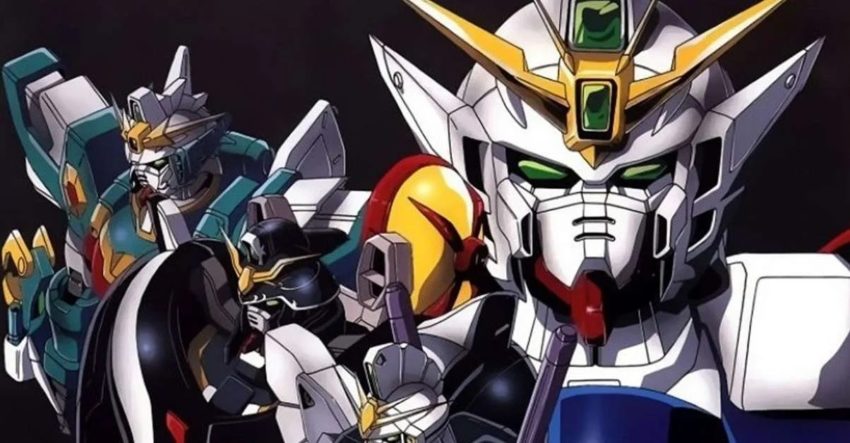
The beginning of 2021 sees Anime Limited release the film Gundam NT and the second half of the series Turn A Gundam. These anime were made nearly two decades apart, but they have similar agendas. Both set out to consolidate the complex Gundam franchise, but in drastically different ways. So, it’s a good time to dive into the gnarly issues of how the Gundam franchise fits together: its multiple calendars, its recurring stories, its conflicting timelines and timescales.
WHEN IT WAS SIMPLE
As anyone who’s followed Anime Limited’s release of the early Gundams knows, the franchise was straightforward for its first decade. Back then, it proceeded like Star Trek in the 1980s and 1990s (and that’s not the only time we’ll invoke Trek in this discussion.) The early Gundams had a clear continuity. The main characters changed each series, but there were plenty of continuing story strands and crossover characters, such as the redoubtable Captain Bright Noa. This continuity runs through the original 1979 Gundam series; the sequel series Zeta Gundam and Gundam ZZ; and the 1988 film Char’s Counter Attack. They were also united by the same director, franchise father Yoshiyuki Tomino.

Granted, there were wrinkles even then. For one thing, there was an alternative version of the original 1979 series, the condensed Gundam film trilogy, shown in Japanese cinemas in the early 1980s. However, apart from skipping much of the TV story, the changes are mostly limited to pieces of new animation and more talk of Newtypes. It’s certainly nothing like Sunrise’s later film versions of Code Geass,whose story changes put the franchise on a whole new time track (leading to the Re;surrection movie).
True, there’s a massive, shocking swerve in tone between the end of Zeta Gundam (tragic) and the start of Gundam ZZ (wacky), which I’ve discussed here. And then there are Tomino’s three novels based on the first Gundam series. They’re available in English in a single volume, subtitled Awakening, Escalation, Confrontation. Tomino wrote them before he knew there’d be anime sequels, and so he makes massive changes to the Gundam story that make the books quite incompatible with his own later anime. Perhaps Sunrise should adapt that version next.

Still, the main point stands. Up to Char’s Counter Attack, Gundam was simple. After that, things get hairy, with the later Gundams splitting into various types.
THE “ROGUE ONE” GUNDAMS
Several Gundams take what you could call the Rogue One route, after the Star Wars spinoff film. In other words, they’re new stories, nearly always with all-new characters, which are set within the timeline established up to Char’s Counter Attack. In 1989, the year after Counter Attack, there was an acclaimed Gundam video series called War in the Pocket. It showed an untold episode in the “One Year War” depicted in the original series. It was also one of the first Gundam anime not directed by Tomino.
That held true of the later Rogue One-style Gundams, which were all made for video or cinema. They included The 08th MS Team (1998); the MS IGLOO stories, starting in 2004; and the Gundam Thunderbolt films from 2015. An earlier title, 1991’s Stardust Memory, is especially notable. Although it has new characters, it takes the opportunity to plug story gaps between the first Gundam and Zeta Gundam, explaining how the world changed between those series.
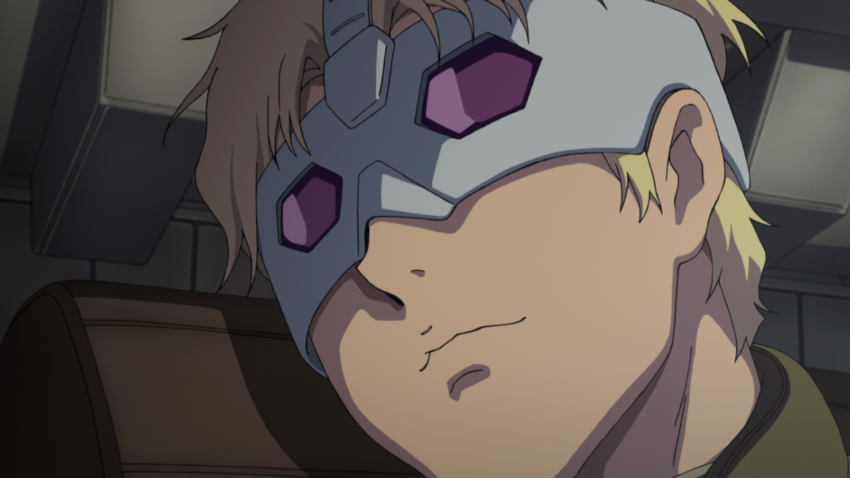
In the 2010s, Gundam: The Origin dove further back still, tracing the events in the years before the original Gundam serial. Unlike most of the “Rogue One” Gundams, Origin was packed with appearances by fan-favourite characters. The lead character is the legendary Char in his younger years. The series was based on flashback material from an epic Gundam manga by the original anime’s character designer, Yoshikazu Yasuhiko.
THE “ALTERNATIVE” GUNDAMS
Beyond the “Rogue One” Gundams, there were what appeared to be “alternative” Gundams. They were alternative in that they had no obvious continuity with any of the early Gundams, making them ideal for new viewers. For that reason, they were shown on TV. The first such show was 1994’s G Gundam, an oddball series about a giant robot fighting tournament, with outrageous national stereotypes in the robot designs.
If they weren’t enough to differentiate G Gundam, the series also had its own calendar. All the other Gundams I’ve mentioned so far use the same imaginary calendar, called the “Universal Century,” analogous to Star Trek’s stardates. The first Gundam series takes place in the year UC 0079, reflecting the fact it was broadcast in 1979. Char’s Counter Attack is set fourteen years later, in UC 0093.
G Gundam, though, invented its own calendar, the Future Century. From then on, each “alternative” Gundam made up its own calendar: for example, After War, Cosmic Era and Advanced Generation.
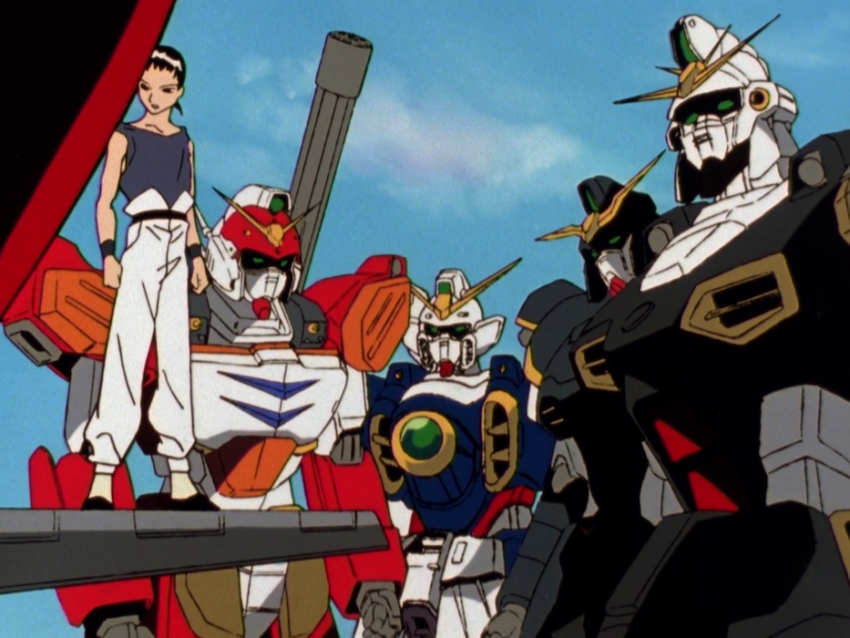
After G Gundam, the next alternative series was the well-remembered Gundam Wing in 1995. Whereas G Gundam had set out to be as unlike its predecessors as possible, Gundam Wing was practically a reboot of the older series, even if it was set in the “After Colony” era. Once more there was a war between humans on Earth and in space, with cylindrical space colonies and troubled teens. One of Wing’s main characters, the wily Zechs Merquise, was blatantly cloned from the most famous Gundam star of all, Char Aznable. There’s more on how Wing remade the early Gundams here.
Wing wasn’t even the most obvious retelling of the old Gundams. A few years later, Gundam Seed was an even closer remake, now relocating the action to the Cosmic Era. But the other “alternative” Gundams tended to borrow at least basic points from the franchise’s first decade. Aside from G Gundam and Wing, the 1990s also saw the series After War Gundam X. Gundam Seed and Gundam 00 followed in the 2000s, and Gundam AGE and Gundam: Iron-Blooded Orphans in the 2010s.
To recap: after Char’s Counter Attack, there were Rogue One-style stories exploring the established timeline, and “alternative” stories with seemingly no ties to their predecessors. Only things were more complex than that, thanks to Tomino.
NEW GENERATIONS AND TURN A GUNDAM
Gundam’s creator wasn’t involved in any of the “Rogue One” or “alternative” Gundams. Rather, he was busy extending the Universal Century into distant, next-gen futures. In 1991, Tomino directed the film Gundam F91. It depicted a new conflict set in UC 0123, thirty years after Counter Attack. No character from any of the previous Gundam anime appeared. It was followed by Tomino’s TV series Victory Gundam, set a further thirty years on in UC 0153.
That brings us to Turn A Gundam, which was Tomino’s next contribution to the franchise, in 1999. This blog has summarised Turn’s story elsewhere, but it didn’t mention its relationships with other Gundams. That will involve spoilers, though I won’t give away anything about the characters.

Turn A Gundam starts off looking like an “alternative” Gundam series. It uses an old-fashioned looking setting, like Earth at the start of the nineteenth century. But this Earth is attacked by other humans who live on the moon, just as Earthlings start finding ancient Gundam robots buried in the ground. By now, many viewers will suspect that, far from being set in the past, Turn A Gundam takes place in a distant future.
That’s dramatically confirmed toward the end of the series, through a montage of video clips. It’s revealed that Turn is indeed set thousands of years in the future. The Universal Century, as shown in so many Gundams, is literally ancient history for Turn’s characters. But there’s more…
You see, the video clips in Turn A Gundam don’t just show the Gundams set in the Universal Century calendar. They also show images from some of the series I’ve been calling “alternative” Gundams; for example, After War Gundam X. And Tomino’s comments on the series make clear this isn’t a mistake or an in-joke. What he’s implying is that all the Gundam anime take place in the same universe. They’re part of a timeline that’s thousands of years long – so it’s wrong to say, for example, that Gundam Wing is set in a paralleluniverse to the first Gundam.
AFFIRMATIVE ACCEPTANCE
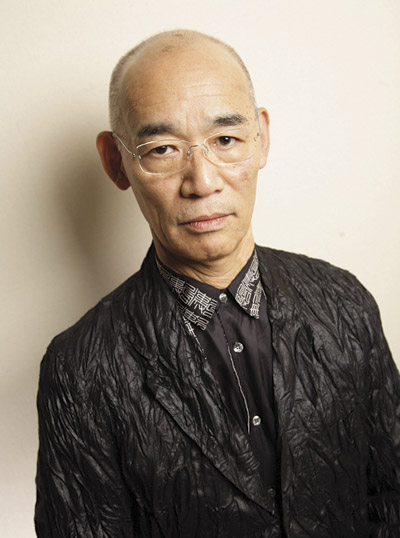
Speaking to Anime News Network, Tomino said he made Turn A Gundam with “the idea of affirmatively accepting all of the Gundam series.” That’s reflected in the show’s title. Although I’ve been writing the middle symbol as “A,” it’s actually “Ɐ,” a symbol which can be used in logic to mean “for all values of a set.”
And how big is that set? Turn was made when there were three “alternative” Gundam series around – Gundam Wing, G Gundam and After War Gundam X. But are we meant to assume that all the “alternative” Gundams made later, like Gundam Seed, Gundam 00 and Iron-Blooded Orphans, are part of Turn’s mega-timeline too? The answer is yes, according to a “Gunpla” Japanese manual published in 2014, which specifies that Turn is set after them all, the end-point of Gundam.
Or maybe not the end-point, as Tomino made the 2014 series Gundam Reconguista in G. Again, it’s set in a far future world; unlike Turn, everyone in this world knows there was once an ancient time called the Universal Century. Reportedly, there’ve been conflicting statements about if Reconguista happens before or after Turn, but then the ordering of Gundams is never clear.
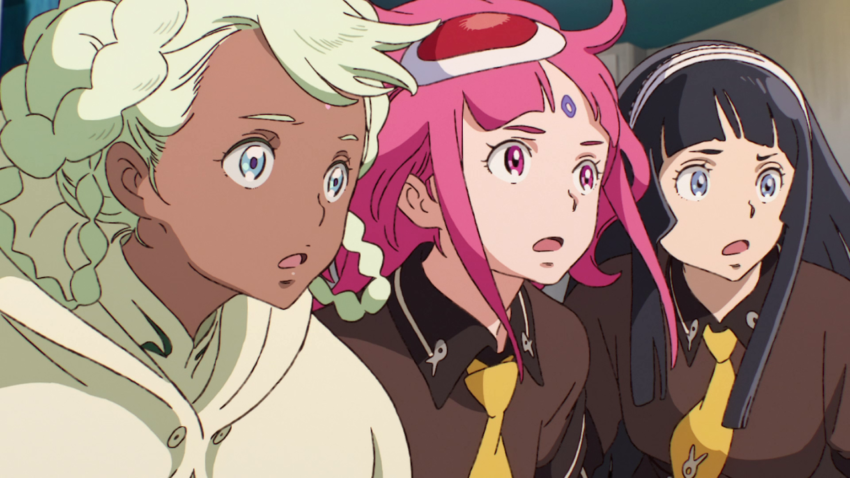
By the way, I haven’t heard any serious suggestion that Turn’s “affirmative” acceptance extends to parody Gundam anime (there are several), or to the line of Gundam anime in the 2010s with “Build” in their names; for example, Gundam Build Fighters. The “Build” anime suppose that the Gundam franchise itself inspired fans to fight VR battles; these are thoroughly “meta” Gundams.
SHOULD WE BELIEVE A WORD OF IT?
For fans of print SF and fantasy, the image of a creator like Tomino deciding to unify loads of separate stories should be familiar. Isaac Asimov is a famous example. Near the end of his life, he wrote novels such as Robots and Empire, tying decades of his past fiction into one universe. Stephen King is another well-known case, linking many of his stories throughout his career, though he often appeals to a multiverse.
The idea that history consists of cycles of very similar events is suggested in other anime; for example, in the centuries-spanning Gall Force space opera. Viewers of a mystical bent can speculate the umpteen Gundam characters who resemble the iconic Char Aznable might all be Char, endlessly reincarnating over the millennia.
In other ways, though, the Turn idea looks plain silly, especially if the timeline extends over the “alternative” Gundams after Turn. Can history really repeat so exactly, without anyone noticing? Can future civilisations look so alike over thousands of years? Gundam 00 poses particular problems, as it’d have to start the timeline – it’s set in the 24th century A.D. That hardly seems supported by some of the things that happen in 00, especially in the sequel film A Wakening of the Trail Blazer.

I found an elegant fan theory, inspired by some of the rationalisations in a rival franchise, Macross. According to this idea, Turn could still be the end of the Gundam timeline. But rather than showing a continuous history, the other Gundams might be depicting legends of what came before, conflicting versions of the same ancient events. Yes, this is the Rashomon theory of Gundam,and it’s a lovely idea… though I’m not aware of any support for it in official Gundam media.
DIVERGING OR JOINING?
There’s a further side to the puzzle. In 2010, a decade after Turn A Gundam, Sunrise started releasing the video series Gundam Unicorn, the loveliest Gundam of all. (Confession of bias; of all the Gundams I’ve seen, it’s my favourite.) It didn’t involve Tomino, being based on spinoff novels by Harutoshi Fukui.
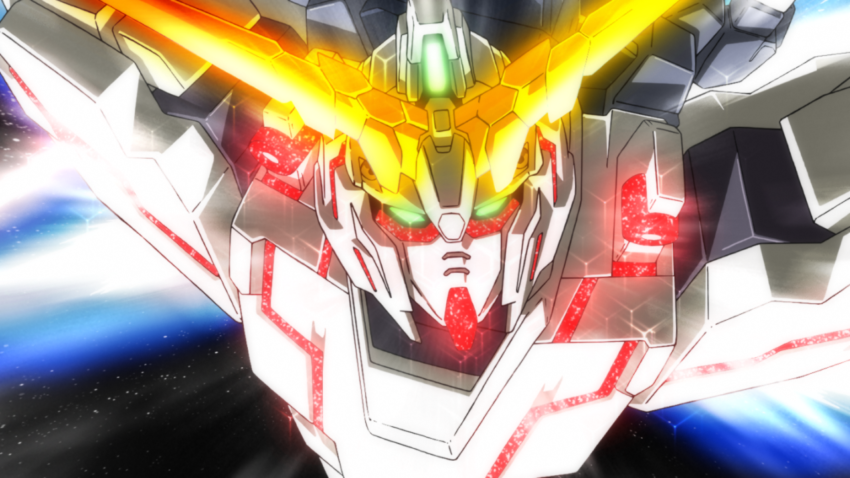
The series had the temerity to go back to Char’s Counter Attack, the franchise’s great split point. Unicorn is a sequel to Char’s Counter Attack, but it’s not a distant sequel set decades, centuries, or millennia later. No, Unicorn is a direct continuation of the story, set in UC 0096, only three years later. It has plenty of crossover characters and continuing story threads, like the Gundams of the 1980s.
Gundam Unicorn was directly sequelled in the 2018 film Gundam NT (aka Gundam Narrative). Once more this was based on Fukui’s fiction and set just a year after Unicorn, in UC 0097. As noted at the start, NT consolidates the franchise, very like Turn A Gundam. The film ties together elements of the first Gundam, Zeta Gundam and Counter Attack, as well as cameos from the Unicorn characters.

Nothing in Unicorn and NT seems to contradict anything in the more distant sequels, the ones Tomino created decades earlier. As we’ve seen, these run from Gundam F91, which is (theoretically) set a quarter-century after NT, to Turn A Gundam and Reconguista, which are (supposedly) set millennia later.
That’s one way of looking at it. Or… Perhaps Unicorn is a huge retcon of Tomino’s millennia-spanning vision! True, Tomino’s Reconguista came out after Unicorn, but then Reconguista wasn’t originally conceived as a Gundam show at all. So, do we have to worry about it? Tomino seems to care little for canon, having contradicted himself ever since his first Gundam novels. In the 2000s, he directed a compilation film trilogy of his Zeta Gundam, subtitled A New Translation. Unlike his films based on the 1979 series, the Zeta films make huge changes to Tomino’s TV story. Among other things, the ending makes Gundam ZZ impossible…
HATHAWAY’S FLASH
The upcoming cinema film Gundam: Hathaway’s Flash still awaits a Covid-delayed release in Japan. I previewed it here. It’s another “close” sequel to Char’s Counter Attack, reportedly set in UC 0105. So, the setting is theoretically eight years after Gundam NT,and/or eighteen years before Gundam F91. Or maybe the setting will be neither of those, splintering Gundam into yet another post-Counter Attack continuity.
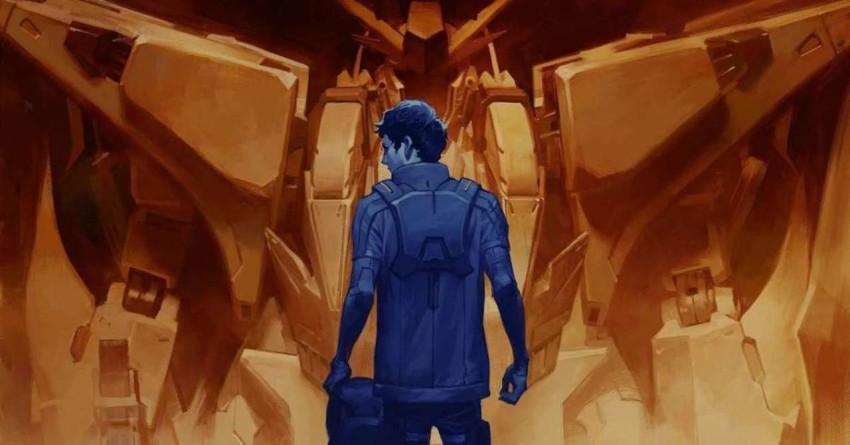
Unlike Unicorn and NT, Hathaway isn’t from a story by Harutoshi Fukui. Rather, it’s based on a trio of novels written by Tomino himself, and old novels at that. Tomino wrote the books just after the Counter Attack film, in 1989-90. In other words, Hathaway’s source story dates from long before Turn A Gundam or Gundam Unicorn.
As of writing, we’ve no idea how close the film will stick to Tomino’s books. It might ignore everything in Unicorn and NT, or flat out retcon them. Or maybe Tomino’s story will be reworked, in order to tie in Fukui’s newer characters. But Fukui fans should be wary! Tomino was nicknamed “Kill’em’all,” and the Hathaway film is directed by Shuko Murase, who made the mercilessly violent Genocidal Organ. It’s possible the Hathaway film could bring back the Unicorn and NT characters just long enough to slaughter the lot of them – the Alien 3 approach.

Leaving that aside, it’s certainly possible that Hathaway, or the Gundams following it, could join the dots between Gundam NT and Gundam F91, much as Stardust Memory bridged the gap between the first Gundam and Zeta Gundam. If so, it would parallel the new developments in Star Trek. For much of the 2010s, Trek seemed to wander loosely in parallel timelines. Even when Star Trek: Discovery started, it was hard to believe this was the “classic” Trek universe, whatever the creators said. Yet in the last couple of years, Trek has doubled down on the idea that the franchise is a continuing story. As of writing, Discovery is venturing into Trek’s own future, though going forward 900 years would look like small beer to Tomino.
When it comes to Gundam’s own future, we shall see…
Andrew Osmond is the author of 100 Animated Feature Films. Much of the Gundam series is released in the UK by Anime Limited.
Zaku
January 25, 2021 2:28 pm
I'm a little confused as to how NT 'consolidates' the franchise. By having references? No more so than Unicorn. Not to mention the Fukui novels explicitly reference F91 and Turn A in the final volume. Fukui actually wrote the recent "Light of Life" short, the thesis of which is that every "loop" is caused by the Turn A awakening and wiping out all civilization. So no loop is aware of the previous show basically. However I am steeped in Gundam Arcana at this point. It's stuff like this that makes the franchise seem a little impenetrable to new fans
Andrew Osmond
January 26, 2021 1:19 pm
Many thanks for your message, Zaku! Well, I freely confess I hadn't heard of the 'Light of Life' film until you mentioned it - it's not even been added to the Wikipedia page yet. It may be that "Light of Life" and the Fukui books answer many of the questions I raised in my article. However, you used the word 'arcana.' At present, these answers seem to be contained only in tie-in books and in the 'Light of Life' film, which the gundam.fandom site describes as 'a 44-minute special video.' Some fans might question if they carry the same weight as e.g. a cinema film or a 50-part TV series. After all, some of Tomino's own Gundam novels utterly contradict what happens on screen! Any Star Wars fan knows the 'arcane' bits of a franchise can be the first to get retconned. Of course, the ideas in Fukui's books and in 'Light of Life' may well be reflected in much more mainstream Gundam anime in the future - perhaps even in the Hathaway film that's coming up soon. Then again, a quick google suggests that fans are already arguing over how 'Light of Life' should be interpreted; whether it makes sense in terms of what's been established already; in short, whether we should believe a word of it! https://www.reddit.com/r/Gundam/comments/ew3hbu/im_calling_bullshit_on_the_light_of_life/ In answer to your other question, Gundam NT makes especially heavy use of flashbacks to reveal the backstory of the three main characters. There are sequences set at the time of the first Gundam (the first colony drop), and in the timeframe of Zeta Gundam, and then they're all put in the context of things happening in the aftermath of Gundam Unicorn. These are more than just continuity references, NT's story moves back and forward through the UC timeline. That's why I thought it was "consolidating" the franchise.
Gustav Kuriga
July 6, 2021 6:48 pm
I don't think Turn A was mean to imply that all the other non-UC Gundams were the same continuous timeline. Rather that something occurred which grafted all the timelines into one. That's why the official timeline image for Gundam leading into Turn A has a bunch of separate, parallel timelines that merge into Turn A.